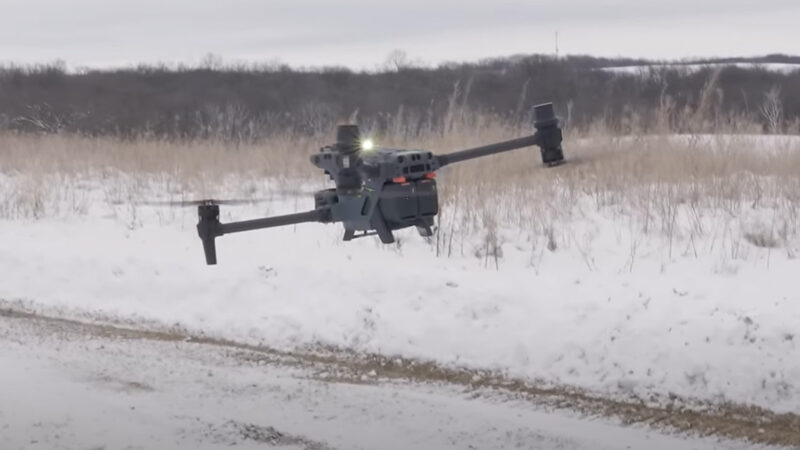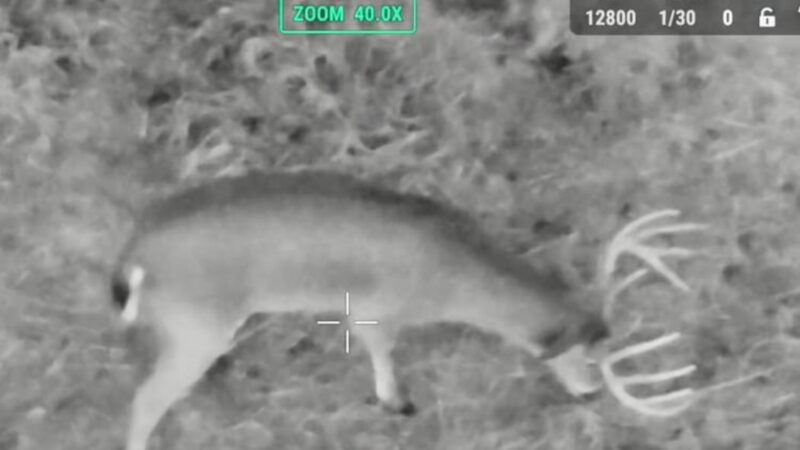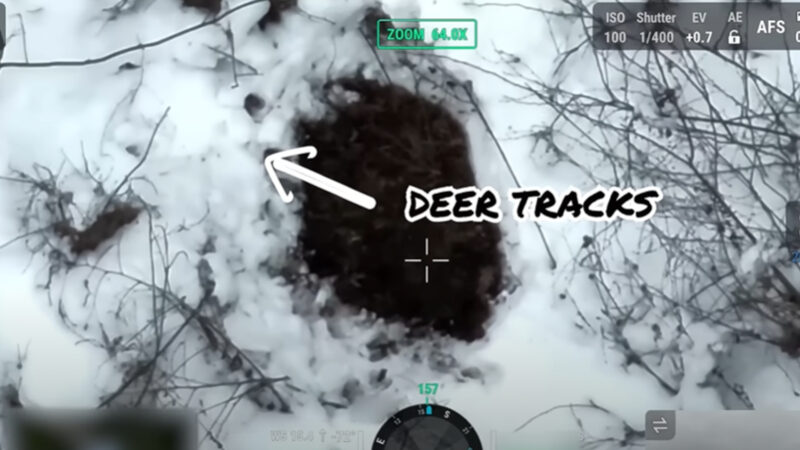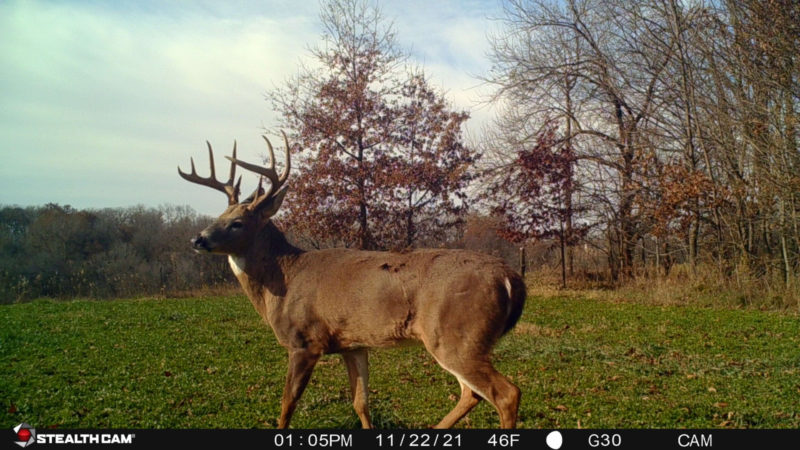Every technological advancement in hunting seems to bring with it a discussion of ethics and fair use, and the use of drones is no different. And rightly so. Although the intent of such technology is typically for good, there’s always the possibility that it will be used for bad.
In fact, I’d argue that it’s inevitable that a percentage of people will eventually exploit any new technology in ways that are not aligned with the rules of fair chase or are just flat-out illegal. You could also say that about almost every technological advancement in the history of mankind. But let’s take a look at the potential impact of drones when used for scouting and hunting.

What is a Drone?
There can be a lot of confusion when new technology comes on the scene. Ask a dozen hunters what a drone is, and you’ll likely get a dozen different answers. Many hunters I talk to dismiss drones for scouting as a potential problem because they simply don’t understand what drones are and what they are capable of.
We’re not talking about the $60.00 drones found on box store shelves. We’re talking about devices capable of flying hundreds of feet in the air and producing clear images of every aspect of the landscape below, transmitting those images to a handheld device with an LCD screen that allows you to see exactly what the drone is seeing. These drones can typically fly and hold their position in all types of weather, rain or shine, and hold their position in wind gusts 50 mph or more.

Of course, the actual capabilities of the drone you use varies greatly on price point, ranging from $2,000 for just the drone to $15,000 or more for a complete package that includes high resolution thermal imaging cameras. You can even purchase drones/cameras with night vision. They also have flight times of approximately 30-40 minutes per battery charge, and extra batteries can be purchased.
The quality on many higher-end drones is so good that hunters can locate deer on any hillside, count them and where they are bedded, zoom in to see whether they are buck or doe, and zoom in further still to count the points on even the smallest rack. Theoretically, you could “rough score” a buck while it sleeps in its bed and use that info to determine whether or not you should hunt that location. You could continue using the drone to scour every hillside or woodlot until you found the bedding location of your target buck.
Can you see the potential for misuse? If not, consider these two incidents from 2023.
In October 2023 in Nevada, three men were convicted of using a drone to drive a mule deer off of private property so they could shoot it on public land. They allegedly harassed the animal with a drone until moved onto public land.
In December 2023 in Louisiana, three men used a drone at night to locate an 8-point buck that they then killed the following morning.
There have been many other incidents regarding drone misuse, and some of those cases are ongoing, such as the one involving a Pennsylvania man accused of using a drone to illegally recover wounded game. Although he has been convicted of violating state hunting laws, an appeal is pending, and how that case turns out may very well influence how drones are viewed and used in states all across the country.
Implications of Law Changes
It’s interesting to note that those looking to use drones for commercial purposes must pass a pilot’s test and become licensed by the Federal Aviation Administration (FAA). However, for personal use, the regulation of drones typically falls under the Airborne Hunting Act of 1971, which prohibits using an aircraft to shoot, capture, or kill any bird, fish, or other animal; using an aircraft to harass any bird, fish, or other animal; and knowingly participate in using an aircraft for any of these purposes.
Drones are aircraft, as defined by the FAA: “It is defined by statute as an aircraft that is operated without the possibility of direct human intervention from within or on the aircraft (Public Law 112-95, Section 331(8)).”
For this reason, most states view drones in the same way they view other aircraft. Some states allow the use of drones the day before or the day after a hunt, but not on the same day as you plan to hunt. Others allow them on private land but not on public land. (Always check your state’s regulations before using a drone for scouting, hunting, or deer recovery.)

Many hunters would like to make exceptions for drones simply because they are not “traditional” aircraft. They would rather refer to them as just another technological device available to hunters today; incidentally, this is exactly the argument of the lawyer representing the man in the Pennsylvania case mentioned above.
That’s a major sticking point with massive potential ramifications that could even unravel the Airborne Hunting Act. I mean, heck, if we want to start calling an aircraft by a different term just so we feel better about using it for hunting, then we may as well just repeal the Airborne Hunting Act and make it legal to hunt everywhere on the same day you fly, too.
And yes, I know laws vary from state to state and especially country to country. I saw firsthand on a moose hunt in Newfoundland how an aircraft can aid a hunt. I was transported back to the main camp after harvesting my moose while another hunter boarded the helicopter. They circled a few times until they found a huge bull, landed a couple hundred yards from it, and the hunter made the stalk. He ended up missing that bull at extremely close range. Although this is legal in Newfoundland, it certainly raises a few questions about ethical hunting practices.
Now imagine thousands of hunters across the United States using drones in much the same way.

Pushing the Boundaries of Fair Chase
As a hunting community, it’s important for us to accept that not all technological advancements should be welcomed with open arms. One of the issues, though, is that these advancements tend to happen in such small increments that we don’t even realize things are changing until we’re on the brink of something major. The use of drones for scouting and hunting is a prime example.
Thirty years ago, we saw the proliferation of trail cameras. The digital age brought better cameras that were cheaper to use and maintain. Next came cellular cameras that send images right to our smart phones. And now we have drones, which, if you want to redefine them, are basically cellular cameras that we can maneuver across the countryside to get real-time information about where our target bucks are bedded or feeding.

It’s an incredibly slippery slope. At some point, we have to draw a line in regard to what offers an unfair advantage to hunters.
And sometimes, yes, we must consider the potential for people (even if just a few of them) to abuse that technology. I doubt the court cases mentioned above are the only instances of drones used to illegally harvest and/or recover game. Once drones become more commonplace in the hunting industry, is there any reason to think these instances won’t multiply?
More than anything, though, my concern is that the more we incorporate technology into certain aspects of hunting, the more essential hunting skills are lost. Instead of learning how to read sign and learn animal behavior, our scouting becomes a lesson on how to read thermal imaging and operate aircraft. The connection to the land and the animals we hunt gets lost in the process.

 By
By 



